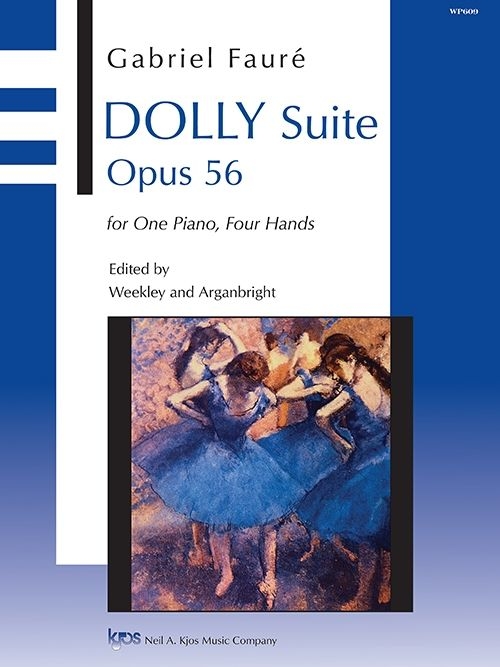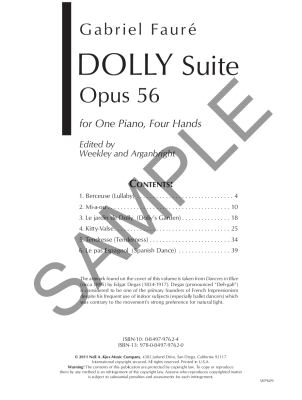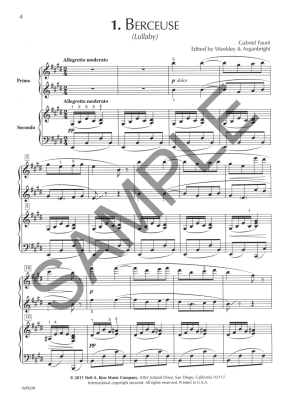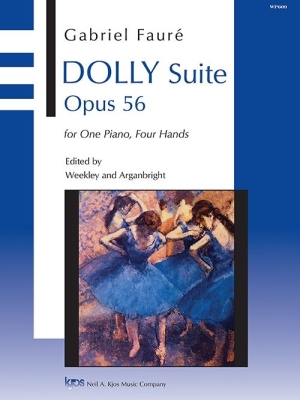Opens in a new window
Kjos Music Dolly Suite Opus 56 - Faure /Weekley /Arganbright - Piano Duet (1 Piano, 4 Hands) - Book

Additional Photos:


- Author/Composer:
- FAURE, GABRIEL
- Instrumentation:
- 1P4H
- Model #:
- WP609
Arranger: Weekley & Arganbright
Format: Book
Instrumentation: Piano Duet (1 Piano, 4 Hands)
Level: Late Intermediate
Dolly is a collection of six pieces written over a period of three years (1894-1897). They were composed in honor of Helene nicknamed "Dolly," who was the daughter of Faure's dear friend, the singer Emma Bardac. (Emma later became Debussy's second wife.)
- The opening Berceuse (Lullaby) suggests a moment of childhood peace and tranquillity, perhaps Dolly rocking her doll to sleep.
- The second piece, Mi-a-ou is lively; its title has been interpreted in two different ways. Emile Vuillermoz sees in it "the capricious bounds of the favourite family cat, its quick turns, its zigzag starts, its sudden cajolery, after which...it at last rests in the lap of its little mistress." On the other hand, Marguerite Long, on the basis of her friendship with Faure, asserts that the title is the nickname for Dolly's brother, Raoul.
- The Le jardin de Dolly (Dolly's Garden) represents a quiet stroll through a lovely flower garden. The mood is similar to that of Berceuse but the melody is less predictable with sudden turns toward chromaticism.
- Kitty-Valse is a sort of companion piece to Mi-a-ou, but its rhythm is more straightforward, and we find many unexpected turns in harmony. Its strong accents contrast with delicate, swirling scale patterns. Marguerite Long tells us that "Kitty" is a corruption of "Ketty'" the name of the family dog!
- Tendresse (Tenderness) is the most touching piece of the set. It suggests a conversation between a mother and daughter. In the middle section the two melodic voices are shared by the primo and secondo players in a canon form with bass accompaniment. The second half of the first theme features whole-tone effects.
- In total contrast to this gentle piece, the final piece is Le pas Espagnol (Spanish Dance), which Long says was inspired by a bronze equestrian statue that stood on the mantlepiece in Madame Bardac's house and was admired by young Dolly. Vuillermoz believes it depicts Dolly pretending to be a Spanish dancer, wrapped in her mother's shawl.
Q & A
There are currently no questions for this product.
Reviews
There are currently no reviews for this product. Be the first to write one!





